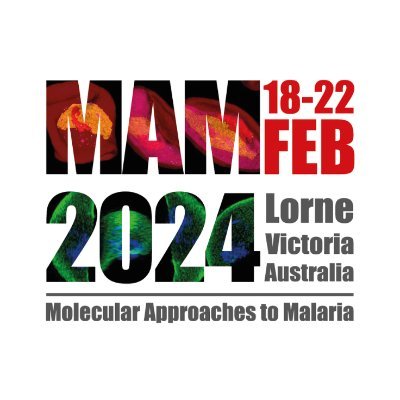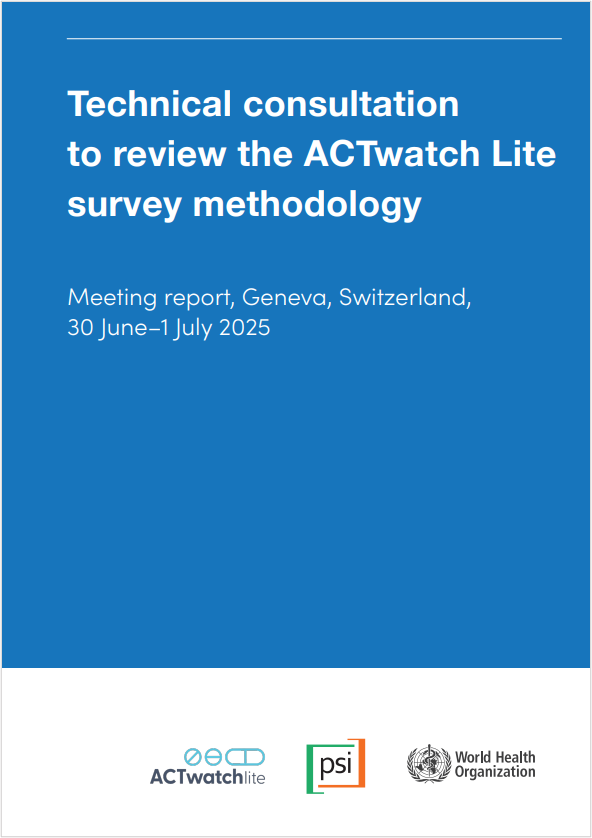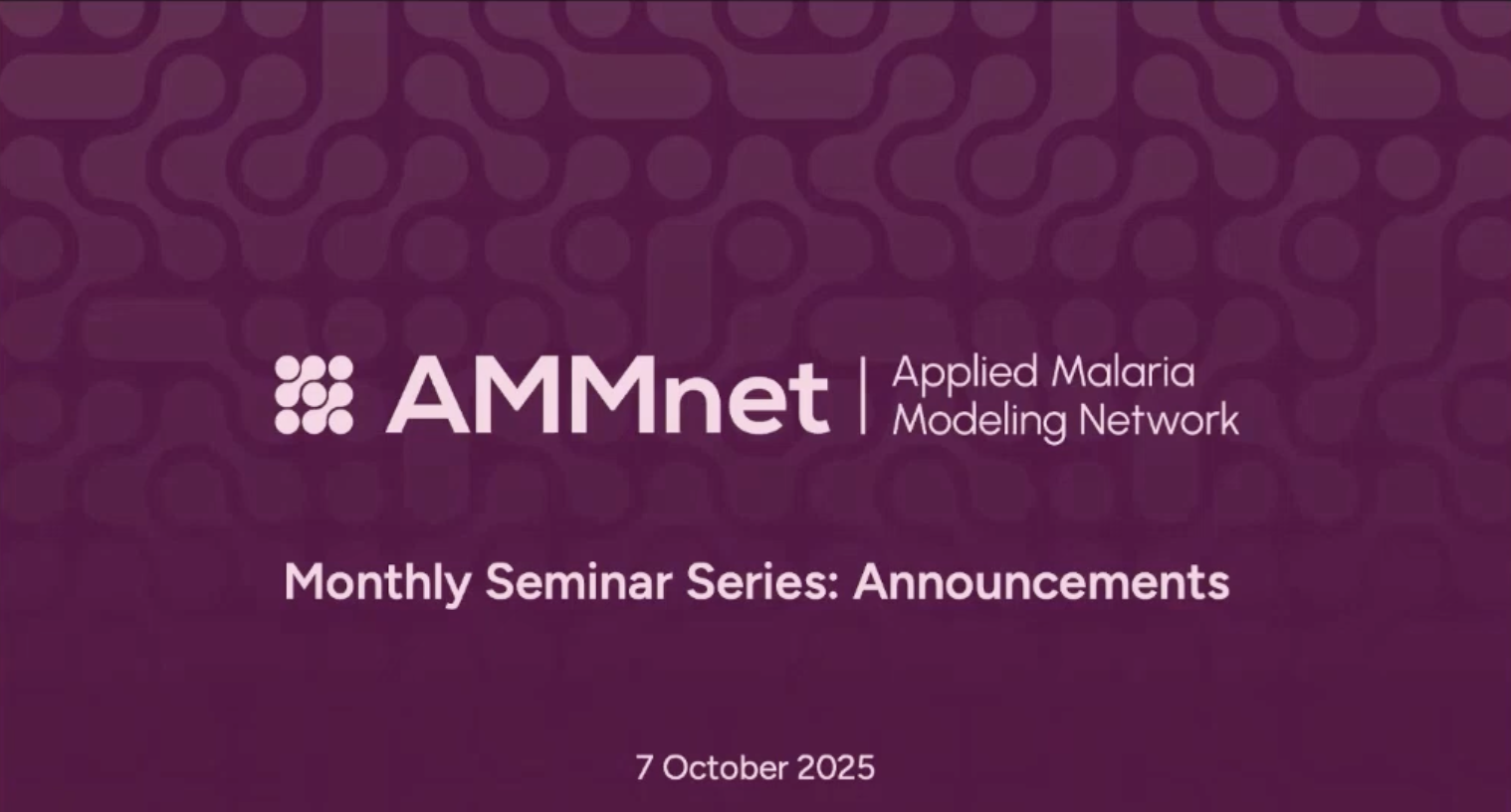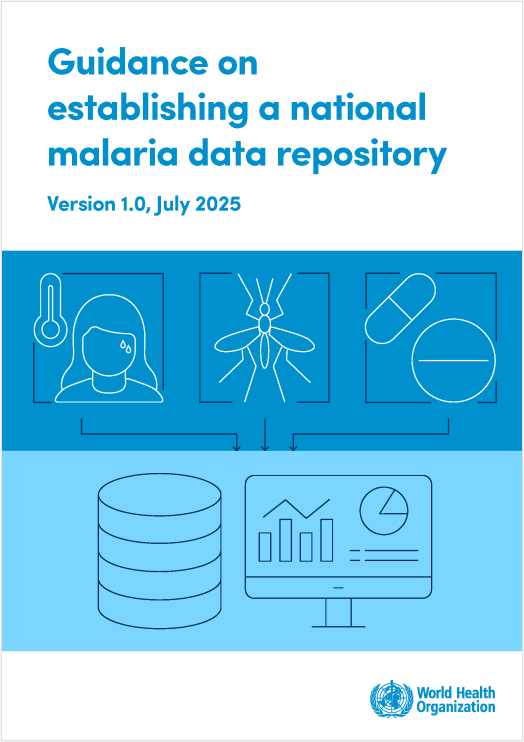Molecular Approaches to Malaria (MAM) Conference – 2024: Day 3
Wednesday, 21st February 2024
Published: 21/02/2024
This report is brought to you by the MESA Correspondents Angela Rumaseb, Katelyn Stanhope, Mohini Anjna Shibu, and Nutpakal Ketprasit. Senior editorial support has been facilitated by Carla Proietti, Emma McHugh and Danushka Marapana.
THEMES: THEMES: Basic Science
MESA Correspondents bring you cutting-edge coverage from the MAM 2024 Conference “Malaria in a Changing World”.
Session 7 – Lifecycle Biology – Transmission
Flaminia Catteruccia (Harvard University, USA) stated that the best technique to combat malaria is eradicating mosquitoes. However, the use of insecticides has led to the emergence of resistance in mosquitoes. She suggested an alternative approach: using antimalarial drugs on mosquito nets. Catteruccia demonstrated this approach by showing that Plasmodium parasites can be killed in mosquitoes using atovaquone-treated nets. She suggested that using combinations of drugs to treat humans and kill mosquitoes may reduce the risk of parasite and mosquito derived resistance. Catteruccia and team tested over 100 promising new transmission-blocking compounds. The targets of these compounds included cytochrome b, elongation factor 2 and acetyl CoA synthetase. After identifying the most effective of the tested compounds, the team worked on developing more compounds with similar properties. She concluded her presentation by speaking about using single-cell RNAseq (scRNAseq) to identify genes highly expressed in oocyst which may be targeted to stop the oocyst development and thereby block transmission.
Benjamin Liffner (Indiana University School of Medicine, USA) talked about the use of ultrastructure expansion microscopy (U-ExM) to examine oocysts and sporozoites. This technique could enlarge samples between 4 to 4.5 fold which is especially useful for studying organogenesis and proteins of interest in Plasmodium parasites. This technique was used to define a timeline for sporozoite rhoptry biogenesis. He observed the number of rhoptries during two events – sporozoite release and salivary gland invasion. Four rhoptries were found in parasites located in the midgut, but only two rhoptries were observed in parasites in the salivary glands. The four midgut rhoptries were in two pairs – congruent and dimorphic. He reported that the congruent rhoptry pair was used to invade the salivary gland, leaving behind the dimorphic pair. He implicated RON11 in correct rhoptry formation wherein RON11 knockdown parasites showed only half the number of rhoptries.
Lauriane Sollelis (University of Zurich, Switzerland) talked about the switch of Plasmodium falciparum from asexual blood stage parasites to transmission-competent gametocytes. Environmental factors regulate this switch and also epigenetic factors such as the activation of AP2-G, via the nuclear protein GDV1. Sollelis and colleagues employed transcriptomic data from Tracking Resistance to Artemisinin Collaboration (TRAC-I) studies in Southeast-Asia to investigate the impact of natural selection on stage switching. Data showed an association between Ben, a long non coding RNA, and sexual commitment. It was proposed that Ben was an internal sensor of host lysophosphatidylcholine levels which was considered a sensor for metabolic adaptation and cell-fate determination. Interestingly, they found that a high AP2-g expression also coincides with K13 mutations and that dihydroartemisinin treatment reduces stage conversion.
Fiona Angrisano (Burnet Institute, Australia) highlighted the importance of blocking transmission for malaria eradication. Her lab used stage specific proteomics to identify new transmission-blocking targets. Nine protein disulphide isomerases, essential for transmission, were identified to be expressed on the surface of gametocytes. Of the nine, PDI-Trans is transcribed throughout the lifecycle. When it was knocked out, the ookinete conversion rate dropped, and complementation with PDI-Trans restored function. Angrisano showed bacitracin, a known PDI inhibitor, inhibits exflagellation and fertilisation. She thus suggested the use of PDI inhibitors as possible antimalarials, to develop novel transmission-blocking drugs.
Matthias Rottmann (Swiss Tropical and Public Health Institute, Switzerland) emphasised that the currently used Artemisinin-based combination treatments (ACT) fail to eliminate gametocytes, and that novel drugs with potent transmission-blocking activity were needed. His work was focused on the discovery and profiling of stage-specific gametocytocidal compounds in vitro, and the in vivo pre-clinical validation of transmission blocking drug activity using humanised mouse models. His team used the genetically-engineered inducible Gametocyte Producer (iGP) line to develop a simple in vitro assay for drug/compound screening. The immuno-deficient NOD/SCID/IL2rγ null (NSG) mouse model was used to assess Stage V gametocytocidal effect of compounds. In vivo transmission efficacies were determined by membrane feeding assay.
Sophie Collier (The University of Melbourne, Australia) talked about organellar inheritance in Plasmodium berghei. Plasmodium mitochondria and apicoplast are both organelles that are maternally inherited. In her work, she studied mechanisms underpinning such uniparental inheritance. Using several microscopy techniques, including lattice light sheet microscopy, Collier observed the mitochondrion and the apicoplast during gametogenesis and noted that these organelles were excluded from exflagellating male gametes. This data was supported by digital-droplet qPCR, and results showed a decrease in the relative copy number of the apicoplast and mitochondrial genomes in male gametocytes, confirming the exclusion of these organelles from the microgamete. Forced crosses were set up between single sex lines with a selectable polymorphism in the mitochondria of the male parent. After screening 1.4 million sporozoites from such crosses, a single male leakage event was identified, demonstrating that, while being an extremely rare event, it is possible for drug resistance encoded by the mitochondrial genome to be inherited from the male parent.
Session 8 – Vaccine Design
Matthew Higgins (University of Oxford, UK) presented the structure of the PfPCRCR complex, utilised in erythrocyte invasion, which appeared to be a promising blood stage vaccine target. This complex included PfRH5, PfCyRPA, PfRIPR, PfPTRAMP and PfCSS. To further understand the molecular mechanism of the PfPCRCR complex, Higgins utilised cryogenic electron microscopy to elucidate its structure in high resolution. The protein PfRIPR was found to bind to a complex containing PfCSS and PfTRAMP. As PfRIPR was bound to PfCyRPA and PfRH5, which attached to basigin on the erythrocyte membrane, it was shown that PfRIPR was responsible for bridging the space between the erythrocyte and merozoite membranes. Higgins then mapped identified neutralising antibodies onto the model of the PfRCR complex, which demonstrated that these antibodies target PfRH5 and PfCyRPA to prevent the binding of PfRCR to the erythrocyte surface. Interestingly, it was found that highly effective PfRIPR antibodies act towards the parasite membrane. Higgins concluded that furthering the understanding of invasion proteins could inform rational vaccine design.
Azza Idris (National Institutes of Health – NIH, USA) highlighted that despite progress in control measures like insecticide-treated nets (ITNs) and rapid diagnostic tests (RDTs), efforts have stalled due to parasite derived resistance. Developing effective vaccines has been challenging due to the parasite’s complex life cycle and limited durability of existing vaccines. Idris emphasised the value of monoclonal antibodies (mAbs) that target circumsporozoite protein to induce passive immunity. Idris highlighted the advantages of antibodies as therapeutics, including their ability to safely and efficiently instigate immediate and high level protection independently of the immune system while being unaffected by prior exposure and administered through a simple dose regimen. Using samples from individuals who had received the attenuated P. falciparum whole sporozoite vaccine, Idris identified CIS43, a CSP-specific antibody. This antibody conferred protection in a humanised mouse model by recognising the junctional epitope on CSP. She introduced L9LS, a genetically engineered version of CIS43, which has a longer half-life and has now reached clinical trials. Idris concluded by reiterating the potential of mAbs as a safe and effective intervention against malaria.
Liriye Kurtovic (Burnet Institute, Australia) evaluated phase IIb clinical trials in which children received the CSP-containing RTS,S vaccination. Kurtovic explored the antibody responses of the children longitudinally and found a strong induction of IgG with a more moderate induction of IgM and IgA. To further explore these antibody responses, Kurtovic utilised surrogate cell-free assays to look at the antibodies’ functional activities. It was determined that antibodies fix the complement initiation protein C1q. Further, the antibodies from vaccinated children were found to recognise the NANP and C-terminal of the CSP protein, albeit with variable affinity. Finally, Kurtovic identified antibodies with FcγR binding activity targeting specific CSP domains.
Danielle Stanisic (Institute for Glycomics, Australia) performed proof-of-principle studies to explore the use of whole parasite vaccines. Stanisic first inoculated rodents with blood-stage malaria parasites chemically attenuated with Tafuramycin-A (TF-A) and showed the induction of protective immunity. This concept was advanced through vaccinating malaria naive humans with TF-A attenuated ring-stage P. falciparum parasites. Limited parasite-specific IgG was induced through the vaccination and surprisingly, two volunteers achieved complete protection. Stanisic highlighted the challenges with this novel approach which include the requirement of the vaccine to be delivered to the patient freshly and the risk of inducing allo-antibodies.
Krishanpal Karmodiya (Indian Institute of Science Education and Research – IISER, India) highlighted the main obstacles to controlling and eliminating malaria, which included a lack of effective vaccines. Traditional vaccine approaches focusing on single antigens have shown limited success due to the parasite’s genetic complexity and immune evasion tactics. Karmodiya introduced a novel strategy which involves combining multiple immunodominant peptide sequences from various blood stage antigens to overcome these challenges. Three chimeric antigens, created from selected B-cell epitopes, demonstrate effectiveness in eliciting neutralising antibodies against the parasite. Using microfluidics, Karmodiya identified that these antibodies reduce cytoadhesion, a crucial step for parasite virulence, and inhibit parasite growth.
Justin Boddey (Walter and Eliza Hall Institute – WEHI, Australia) presented that seasonal malaria chemoprevention (SMC) aims to protect vulnerable populations during malaria season, but current drugs mainly target blood stage parasites, which are increasingly resistant. He talked about a new approach focused on late liver stage parasites, showing promise in providing both chemoprevention and long-lasting immunity. Boddey revealed that targeting aspartyl proteases, plasmepsin IX and X, with the novel compound WM382 kills liver parasites just before blood infection, enabling sterilising immunity against reinfection in mice. Boddey introduced how integrating late liver stage-active drugs, like the clinical candidate MK7602, developed through WEHI-Merck collaboration, into SMC protocols could revolutionise malaria control. These drugs offer dual benefits by preventing blood stage malaria yet allowing immunity to develop against locally circulating strains, addressing drug resistance, and enhancing prevention efforts in endemic regions.
Session 9 – Pathogenesis
Ana Rodriguez Fernandez (New York University, USA) studied anti-phosphatidylserine (anti-PS) antibodies in malaria patients. An in vitro human malaria model showed that the anti-PS was a panel of broadly reactive natural antibodies. The team also showed that infected-red blood cells (iRBCs) induced endothelial barrier disruption, but it was not the cause of cell death in cerebral malaria and RNAseq data confirmed this observation. iRBCs were found to downregulate the protein prenylation pathway, and this pathway was observed to modulate the integrity of the blood-brain barrier. Results revealed that haemozoin, but not the biomolecules attached to it, induced the disruption of the endothelial barrier. The team also investigated the proteins secreted from endothelial cells upon incubation with P. falciparum. It was found that inhibin-beta E was elevated 2 days before cerebral malaria symptoms appeared. This finding was useful for diagnosing cerebral malaria and preventing malaria-associated deaths.
Hannah Fleckenstein (EMBL Barcelona, Spain) and team developed a workflow to study tissue organisation and interaction between parasites and blood brain barrier endothelial cells. This pipeline employed correlative x-ray and electron microscopy to build a 3D map. This model was further improved by including micro CT-based X-ray imaging and synchrotron-based X-ray imaging, in addition to volume electron microscopy. High throughput tomography was also used to visualise the blood brain barrier upon infection. The key observation from the study was that remodelling of endothelial cells occurs and involves wrapping around attached iRBCs.
Tracey Lamb (University of Utah, USA) delivered the results of a study on CD8+ T cells derived from a mouse Plasmodium berghei infection model associated with pathogenesis of cerebral malaria. Lamb described the use of a novel 2D micropipette adhesion frequency assay to determine the presence of responding T cells. This determined the adhesion frequency and affinity showing broad ranges of CD8+ T cells affinities. Utilising a T-cell depleted mouse model and the transfer of only low affinity T cells, Lamb determined that CD8 T cells which travel to the brain and cause pathogenesis were low affinity. Additionally, it was found that higher affinity cells were not pathogenic. This finding contrasts research on other cerebral infections.
Steven Kho (Menzies School of Health Research, Australia) introduced the contribution of the spleen as a compartment that harbours parasites during the life cycle of P. falciparum and P. vivax. Through splenectomy cohorts in Timika (Indonesia), Kho found that a vast majority of patients had asymptomatic infections, with a substantial portion of parasites within their spleens. Spleen and peripheral blood samples confirmed the spleen as a hidden compartment of parasites for P. vivax, since P. vivax biomass was significantly higher in the spleen than in peripheral blood. Kho et al. revealed that differences in spleen architecture and parasite distribution between P. vivax and P. falciparum infections were observed. They found that in patients who had had a splenectomy, the number of circulating parasites was higher but the total biomass lower when compared to patients with an intact spleen. Kho stated that the future aim of the spleen research program is to better understand the biology of the spleen as a reservoir for malaria parasites. Some of the areas Kho discussed were the development of P. vivax serological exposure markers to identify individuals with hidden infections, analysis of the genetic diversity between parasites in the spleen and in the peripheral blood, immune cell phenotyping in the spleen and spatial phenotyping of spleen cells.
Nathan Schmidt (Indiana University School of Medicine, USA) talked about host, parasite, and environmental factors influencing malaria severity. Schmidt highlighted that the composition of the gut microbiota modulates the severity of malaria, with Bacteroides fragilis implicated in susceptibility to hyper-parasitaemia. This was studied in a mouse model experiment, where mice treated with antibiotics had a lower parasitaemia compared to control mice. However, samples from a study in Ugandan children showed an increased abundance of multiple Bacteroides spp in severe malaria cases. A study on germ-free mice colonised with stool samples from children susceptible to severe malaria revealed higher parasitaemia when compared to those from resistant children, suggesting a causal role of gut Bacteroides. He also suggested conducting metagenomic analysis of the gut microbiome to understand malaria better. Targeting gut bacteria therapeutically may prevent severe malaria in children, indicating a potential intervention strategy.
Lauren Galloway (University of Glasgow, UK) presented l P. falciparum schizont sequestration and introduced the bone marrow and spleen as important reservoirs of malaria parasites independent of classical vascular sequestration. Her study focused on the comparative analysis of post-mortem spleen, bone marrow, and lung tissue collected from paediatric fatal malaria cases and non-malaria controls in Malawi. The study revealed significant accumulation of non-phagocytosed parasites (mostly ring-stage parasites) observed in the spleen. However, there was no significant difference in the splenic biomass when compared to other tissue, and there was minimal evidence of an intrasplenic life cycle. She also observed that the splenic biomass had very few gametocytes and that the bone marrow had many more gametocytes. The study suggested that the spleen plays a different role in acute paediatric malaria compared to chronic adult malaria, hinting at a more complex host-pathogen interaction.
Rhea Longley (Walter and Eliza Hall Institute, Australia) highlighted that the challenge of eliminating P. vivax infections was largely caused by the presence of hidden liver stage parasites called hypnozoites. Therefore detecting individuals with these hypnozoites is crucial for effective elimination strategies. Longley introduced a novel approach that involves measuring antibodies induced by 60 P. vivax proteins as markers of hypnozoite presence. Studies across the Asia-Pacific and Americas have identified and validated a panel of serological markers for recent infections. More recently, Longley and team found these markers could be used to identify people with hypnozoites who may have relapsing infections. Longley highlighted that by testing and treating populations at risk based on serological markers, malaria elimination could be accelerated. This approach was introduced by the Vivax Serology Partnership (VISPA), which aims to integrate serology-based identification and treatment interventions into national policies. She also talked about successful interventions using serological testing and treatment (SeroTAT) in Thailand.
Closing Remarks
Matthew Dixon closed the conference by thanking all funding partners, sponsors and exhibitors. Special mention and thanks were given to the principal funders, Open Philanthropy and Johns Hopkins University. Dixon thanked the Mantra Group staff and the Leishman Associates for their great hospitality throughout the conference. Dixon also thanked everyone who contributed to the success of the conference, which included invited speakers, oral and poster presenters, co-chairs, poster and oral judges as well as the organisers and contributors of the two workshops. Dixon closed by announcing the 15 travel award recipients, three oral presentation award recipients and two poster award recipients.
This report is brought to you by the MESA Correspondents Angela Rumaseb, Katelyn Stanhope, Mohini Anjna Shibu and Nutpakal Ketprasit. Senior editorial support has been facilitated by Carla Proietti, Emma McHugh and Danushka Marapana.
Published: 21/02/2024
This report is brought to you by the MESA Correspondents Angela Rumaseb, Katelyn Stanhope, Mohini Anjna Shibu, and Nutpakal Ketprasit. Senior editorial support has been facilitated by Carla Proietti, Emma McHugh and Danushka Marapana.
THEMES: Basic Science



